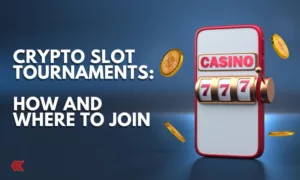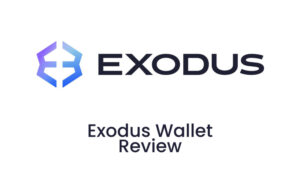Interview with Ethplorer: Ethereum Tokens Explorer

In an ICO era dominated by Ethereum-powered tokens, it is hard to keep up with all the activity. Investors need tools to understand where to invest their funds and to calculate the profitability of their investment. This is exactly where Ethplorer comes in. With a wealth of performance data on a number of Ethereum-powered tokens, Ethplorer provides the tools necessary for investors and enthusiasts to track the advance of a wide variety of ICOs. We interviewed Ethplorer to gain a better understanding of what they do and how they do it.
Ethplorer: The Basics
Bitcoin Chaser: Ethplorer tracks the performance of most of the Ethereum-based tokens that are coming out through ICOs and crowdfunding efforts. What inspired you to do this and how did you start doing it?
Ethplorer: Looking at blockchain data today is like looking at a digital rain of green glyphs and characters from the Matrix movie. To better understand the processes happening inside Ethereum, we needed to see a clear picture of tokens, activities, development, traction, and system capacity. Because of limited tools available for system analysis earlier on, we have solved this problem for ourselves and offered this service for free to all Ethereum users. Ethplorer aims not only to make it easier and understandable for users, but also to inspire them to participate in blockchain activities.
BC: Why offer the information to the public for free?
EP: Like all members of the Ethereum community, we are also interested in promoting Ethereum and its fantastic potential to mainstream investors and users. By popularizing blockchain and applications built on this technology we hope to speed up the transition from the geek world to the mainstream. Ethplorer originally was designed to solve the problem of easy understanding of the token data by users and investors, because without a certain background in crypto it was hard to do. Charts, widgets, and visual popularity analysis are the next steps of mass popularization.
Interesting Trends from the Statistics that Ethplorer Collects
BC: From the statistics you have collected, which regions or countries in the world are leading in terms of interest in the data you offer?
EP: This is a very interesting question. We were actually surprised when we saw the stats. The leader, obviously, is the US, followed by Russia and Ukraine. These three are followed by European countries and Singapore, but there is a significant gap between the top 3 and the rest.
The Future of Ethplorer
BC: How do you see your initiative progressing in the future? Are you aiming to become the financial consulting firm of the Ethereum network?
EP: Working with a few Ethereum projects gives us a sense of where the community and the crypto-public are headed. After an initial Ethplorer release, we have collected a nice list of suggestions for future development and we will prioritize after analyzing the feedback. One of the next milestones will be a combination of solutions with the Everex wallet to allow for the operation of custom tokens and wallets for users. That should simplify market entry and be an easy solution for nontech-savvy investors. As both a customer focused company and a product developer, we want to see how our technology can help in solving real problems, such as financial inclusion. It’s possible we will turn to the consulting/development space in the near future.
An Opinion on the DAO Attack and Ethereum Governance
BC: Ethereum faced a crisis of governance and trust following the DAO hard fork last year. Do you think that the hard fork was the right solution? Why?
EP: What would have happened if all investors lost their DAO money? Plummeting ETH prices during DAO crisis spoke for themselves. Now, seven months after the event, the answer can be found by looking at the distribution of the mining power and market capitalization of those two networks (ETC market cap is around 7.5% of ETH’s). Our opinion is that it was too risky to launch a project of such magnitude without testing both the blockchain itself and smart contracts in particular beforehand. This should have been done step by step, keeping a certain degree of control in the beginning and loosening up towards the expansion.
But if we take an unbiased look at this case, the smart contract architecture and public consensus prevented a hacker to get away with looting. In the end not only everybody received all of their money back, but some even made a profit from trading ETH, DAO, and ETC coins. Would we trust blockchain now more than SWIFT if comparing this “blockchain discredited” $60M DAO hack with $81M hack of the Central Bank of Bangladesh that happened a few months earlier? Were those funds ever recovered?
The Future of Ethereum and Classic
BC: After the hard fork there was a split in the community. Most members went with the fork and a minority formed the alternative Ethereum Classic. In the future, would you consider offering your services to members of the Ethereum Classic community as well? Why?
EP: If the ETC community shows their interest we see no problems accommodating it. However, we have not heard of any token activities in Classic camp, meaning that there is nothing to analyze. Our project is mainly about tokens.
BC: What is your opinion about the Casper protocol and how do you think that a switch from PoW to PoS on Ethereum will turn out?
EP: In perspective, we believe such a switch is necessary. But we would not want to see a transition to Casper happening on the real network at the beginning. So far there were no successful precedents of using PoS on public blockchains as this is a difficult and risky task. At the same time, centralization of miners in PoW is also not a perfect solution, therefore Casper is needed. If the transition team will manage to do it step by step slowly increasing network capitalization, this would be an ideal case. (Note that Testnet won’t work, as there is no real money on it).
Ethereum in the Future and our Interaction with it
BC: In your opinion, how will the Ethereum ecosystem look like in 2 or 3 years?
EP: It seems like the first wave of blockchain “hype” is receding and we are now up to prove this technology. It’s really great to see big businesses and banks endorsing Ethereum by forming the Ethereum Enterprise. In the next 2-3 years, we should see more business apps and projects built on Ethereum contributing to its growing popularity. The mass adoption hopefully will happen in the 3 to 5 year horizon after improved technology fundamentals, more investment coming in, and most importantly, having traditional financial products and services launched on Ethereum. Crowdfunding, crowdlending, crowdinsurance, decentralized fx trading, p2p cross-border remittances should be common financial activities globally.
BC: How do you think Ethereum will change our behavior as consumers of goods, services and information?
EP: We already see IoT and blockchain technologies merging to provide a better supply chain management and provenance in goods we consume on daily basis. Services, especially in payments, and information industries will also see some disruptions. Financial institutions, old fashioned crowdfunding platforms, and notary services should already keep an eye on what’s happening in the blockchain world.
Ethereum and Classical Finance
BC: How will Ethereum change investment and classical finance?
EP: We already see tremendous changes happening in crowdinvestment space. The ICO as an innovative fundraising tool has already disrupted the the classic investment model. The most changes and applications we will see in cross-border remittances, micropayments, crowdinsurance, and trade finance. And there will be a need for an analytic tool like Ethplorer to provide users with real time data.
Click here to check Ethplorer out.







